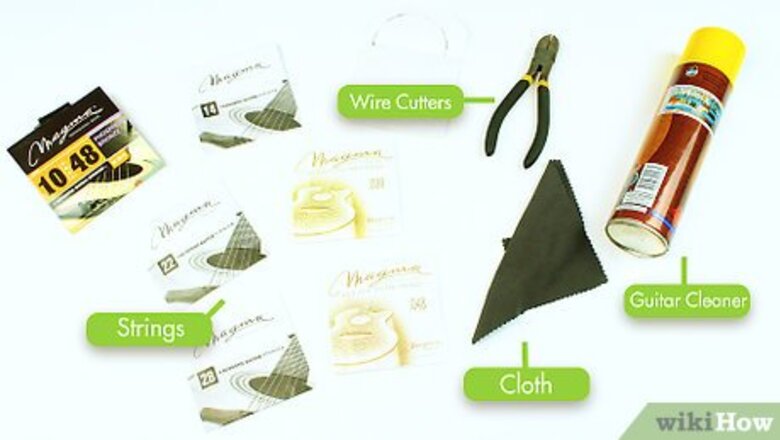
views
Removing Dust

Gather materials. You’ll need a few things to effectively clean your guitar. Gather up two soft cloths (you can use an old shirt, or even buy a cloth made especially for this), a spray bottle containing a bit of detergent and water, lemon oil, guitar polish, something pointy (like needle-nose pliers or a pen), and if your guitar has a shiny finish, a buff cloth.
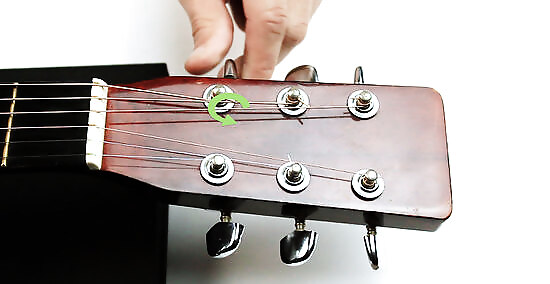
Unstring the guitar. Loosen the strings by rotating the tuning heads “backwards,” as if you were tuning to a deeper pitch. Do this until the string is as loose as it can go. Next, remove the pin for that string from your bridge. If you have a string-winding tool, you can use the edge to get underneath the pin and help guide it out. Finally, pull out the string. Repeat this for all six strings. When this has been done to all the strings, take the bridge pins, and put them somewhere safe. After you removed the strings, you can throw them away, or clean them and reuse them.
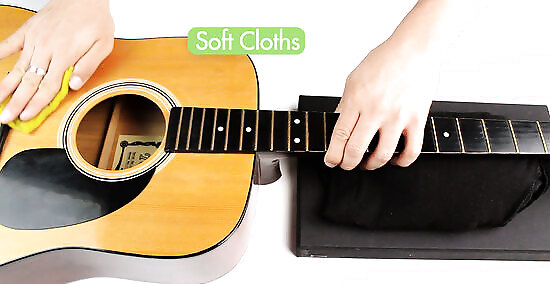
Dust your guitar. Using one of your soft cloths, remove dust from the body and neck of your guitar. Be sure to wipe down the front, sides, and back. Use a gentle motion. You'll want to perform a thorough dusting of your guitar every time you change your strings, or roughly every 1-3 months with regular play.
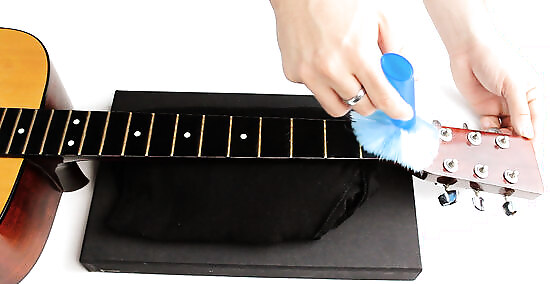
Remove dust from creases. Using a pointer finger beneath your soft cloth, apply some elbow grease to any creases on the guitar. This includes: around the pick-guard, around the bridge, and where the headstock meets the neck. Remove any dust that may be lingering in these areas.
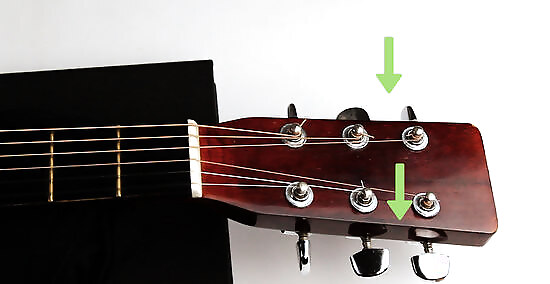
Wipe off your tuning keys. Take your soft cloth and gently wipe off each of your tuning keys. If your tuning keys seem especially dirty or oily, you can spray a bit of detergent water onto a cloth and wipe off your tuning keys with that. Another option is to use a bit of window cleaner on a soft cloth to clean tuning keys.
Cleansing Deeply
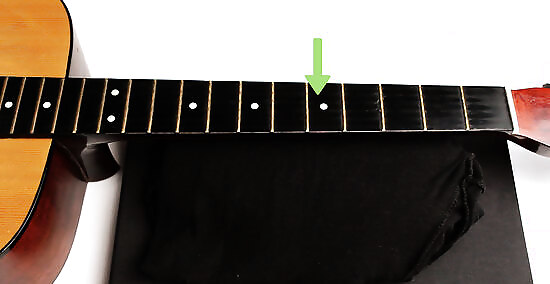
Deep clean along frets. Take your “pointy item” (such as open needle-nose pliers or a pen) and wrap your soft cloth around the point. Scrape your new tool across each fret, starting at the base of the headstock and moving down. This cloth-covered sharp edge will remove stubborn dirt from each fret’s edge. You'll want to give your guitar an extra deep cleaning at least twice a year.
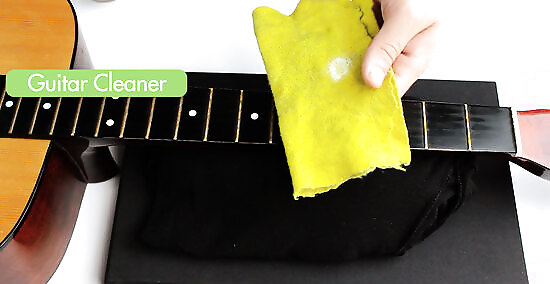
Oil your fretboard. Grab your second soft cloth and your lemon oil. Apply a few drops of oil to your cloth. Then, using a circular motion, begin oiling your fretboard. Begin near the headstock and make your way down. You’ll want to do this at least couple of times per year.
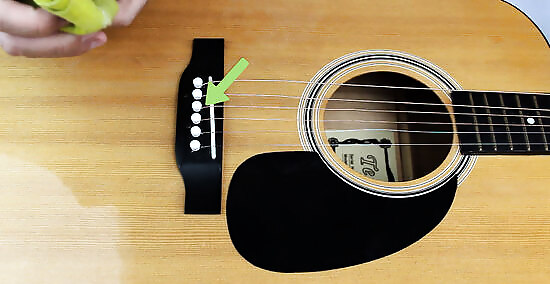
Oil your bridge. Using your lemon oil and the same cloth, apply some oil to your bridge. Once again, use a circular motion. The oil should absorb right into the wood. If there is any excess oil left on your bridge, simply wipe it off with the dry side of your cloth.
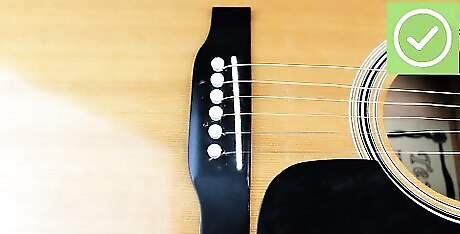
Inspect your bridge. Locate a thin piece of paper. Then, take a look at your bridge. Try to insert the paper underneath the bridge, even if it's only the corner. Ideally, you won’t be able to. However, if you can, it means that your bridge is slowly coming off. If you find yourself in this situation, locate a luthier (or stringed instrument specialist) and invest in getting your guitar fixed.
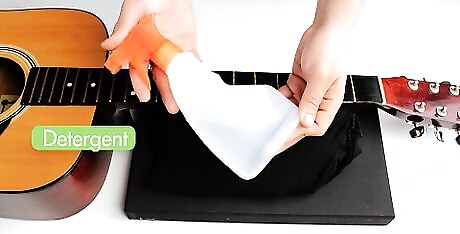
Clean with detergent. If your guitar is particularly dirty, you may want to use a bit of soap. Grab your spray bottle with mild detergent in water. Then, moisten your dusting cloth. Do not spray the guitar directly, as the idea is to use as little water as possible. Use this moist cloth to wash off any dirt from your instrument.
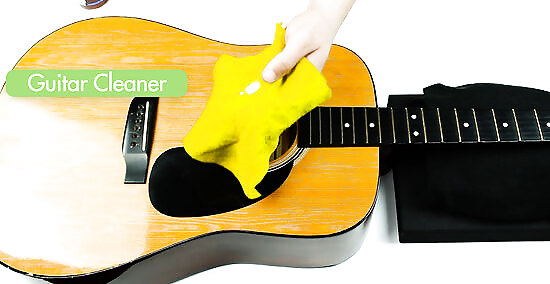
Polish the body. There are numerous guitar polishes on the market. Essentially, there are three types: water-based cleaners, creamy cleaners with fine abrasives, and oils. Select any of these, and apply a small amount to your soft cloth. Then using a soft, circular motion, gently oil the front, sides, and back of your guitar. Use only a small amount of oil. You will want it to absorb into the wood. Look for a polish made for your guitar. Different formulas exists for wood and lacquer finishes. There are special polishes designed to remove cigarette smoke residue. You can search for your model number online to get more details on your guitar’s specifics and find out the best product to use.
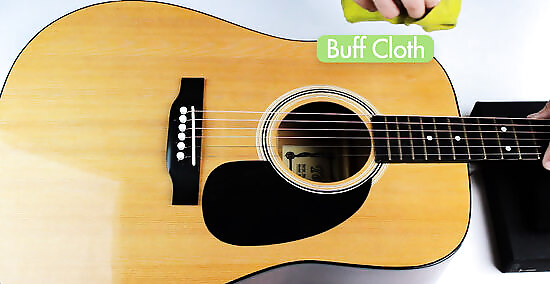
Finish with a “buff cloth.” If your guitar has a matte finish, simply do a final wipe down with your soft cloth to absorb any excess oil. However, if your guitar has a shiny finish, you will want to follow up with a buff cloth. Using your buff cloth in a circular motion, you will polish your guitar to a beautiful shine. Do this on the front, back, and sides.

Look for cracks in your finish. As you polish your guitar, inspect the finish for any imperfections. If you happen to spot any cracks, take your guitar to a repair-person as soon as possible. This will prevent a tiny ding from transforming into an unsightly spider pattern.
Restringing and Finishing Up
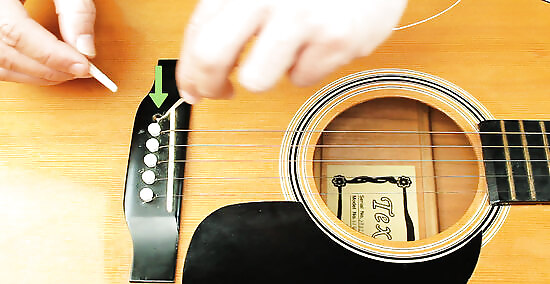
Insert the new string. Slip the ball end of a new string into the appropriate hole in your bridge. Then, insert a pin into the hole. Be sure the groove in the bridge pin is facing the sound hole of the guitar. Do not allow the ball end rest on the tip of the pin, otherwise it will work itself loose. Push the pin into place while also pulling on the string (with your other hand). You will feel the string and pin snap into place.
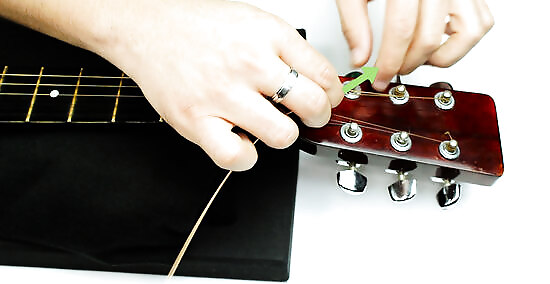
Thread the string. Thread the other end of your string into the appropriate slot on the tuning post. Push the string approximately three inches through the post, and tighten. The string should be pulled in the direction of the bridge.
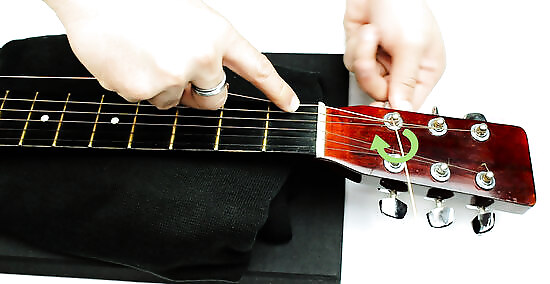
Wind the string. Begin winding the string with your string-winder (or twist the tuning key). You will want 4-5 neat windings on the post with no overlaps. Repeat this method with the five other strings.

Tune your guitar. Using an electronic tuner, tighten each string until it plays the proper note. This will ensure that your guitar is ready to be played next time you pick it up. If you are a seasoned musician, you will be able to tune your guitar by ear.
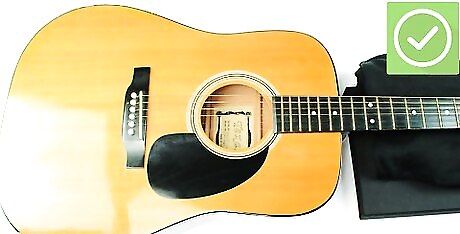
Put your guitar away. You may be tempted to keep your guitar out on display, but the most effective way to keep your guitar clean and healthy is to put it away in a hard case. This will extend the life and vitality of your instrument for many years.

















Comments
0 comment